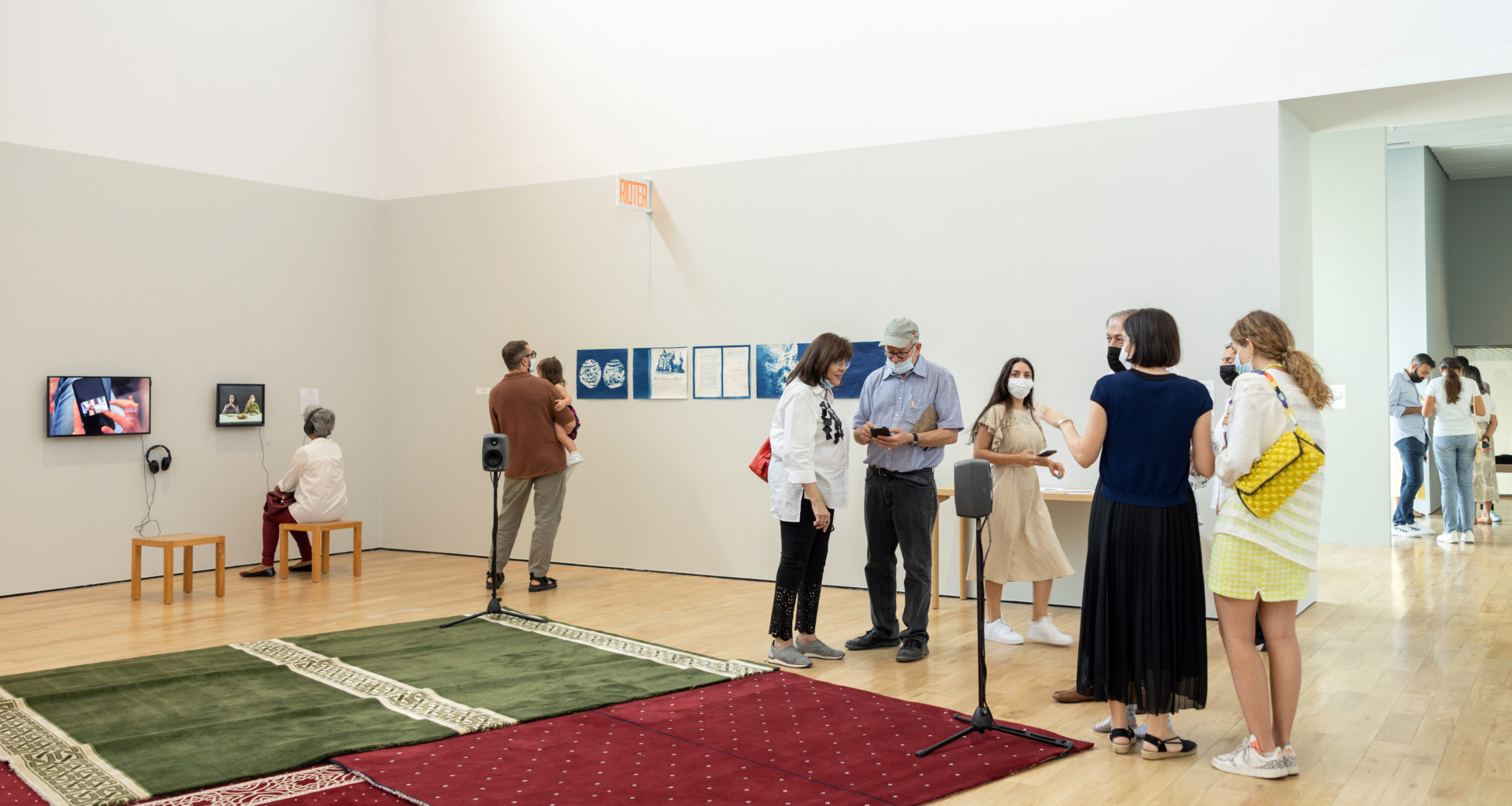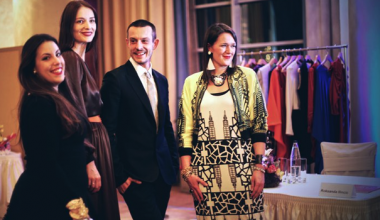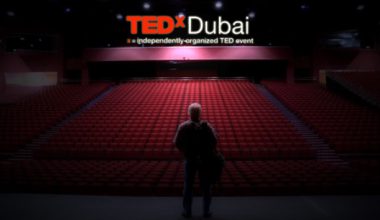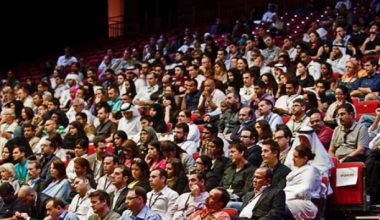‘Proposals for a Memorial to Partition’ is an exhibition curated by Sharjah-born and New York-based curator, critic and art historian, Murtaza Vali. Vali’s ongoing research interests include materialist art histories, ex-centric minimalisms, ghosts, and other figures of liminal subjectivities and repressed histories, the weight of colour and contemporary art of the Indian Ocean littoral.
Currently showing at Jameel Arts Centre in Dubai, we caught up with Murtaza to talk about the motivation, challenges, and execution of this group exhibition that brings together 20 artists and writers that revisit the traumatic shifts that produced the modern nation-states of South Asia.
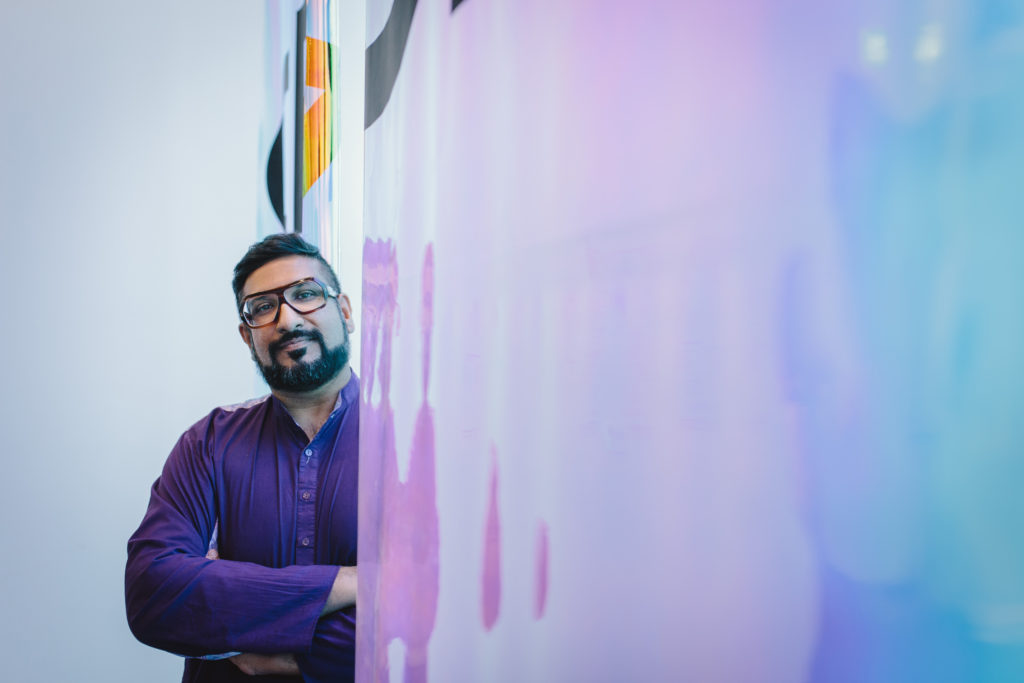
Saira Malik (S.M.): What was your motivation behind curating ‘Proposals for a Memorial to Partition’?
Murtaza Vali (M.V.): I have long been interested in how art can address both personal and collective memories of historical trauma. In the West, this strand of contemporary art practice often focuses on the atrocities of the Holocaust. The 1947 partition of South Asia seems like a key example of such profound trauma in the global south. The optimism of postcolonial independence was marred by horrific violence and mass displacement, yet, in the decades that followed, these experiences had to be repressed in the service of nation-building and development.
In my opinion, this repression has resulted in the frequent but uncanny return of the traumatic past, in the form of ongoing communal and sectarian tensions and, more recently, growing authoritarianism and the oppression of marginalized and minority communities. An open discussion of the horrors of the past is necessary to get over them and the exhibition hopes to help begin this process. The idea of soliciting proposals for a memorial to Partition was inspired by the absence, at least in 2011, of any state-initiated ones across the region.
(S.M.): What were some of the fundamental principles for you when considering the artists to be part of the show?
(M.V.): The first is, of course, the ‘proposal’ itself as an artistic device. By removing the need for actualization, for a pragmatic approach, the ‘proposal’ frees up the imagination, allowing for utopic, poetic, expansive, and unconventional thinking. I also gravitated to artists whose practices are already propositional in a way, who do not make definitive or declarative statements but produce work that is open-ended and allusive, and that must be completed by the viewer.
I also thought of specific strategies or approaches that might help lighten the difficult and heavy subject matter, making it somewhat more accessible. A couple of the proposals have a celebratory spirit, like Amitava Kumar’s gift-giving party, where what is exchanged are simple everyday objects that require components from both sides of the border to be complete, or the Forest Curriculum’s t-shirt, which transforms the razor-studded barbed wire of militarized borders into a psychedelic neon green spiral of light, like one might experience at a rave held deep in the forest once said borders have finally been abolished.
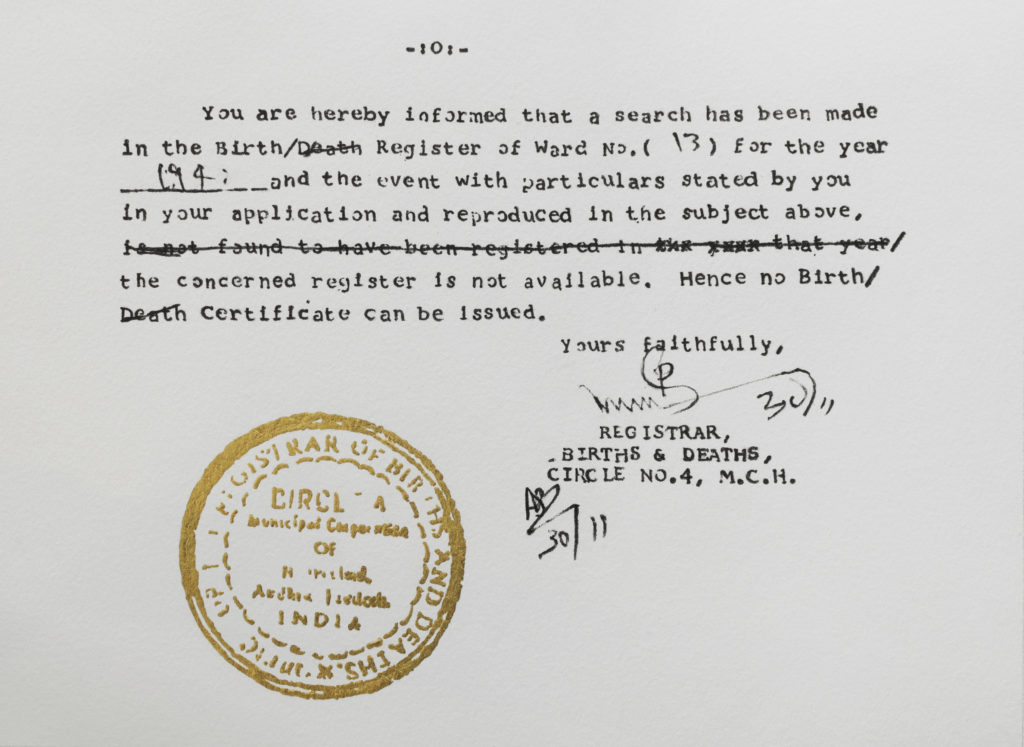
Courtesy of Rishi Raj Jain, GALLERYSKE and the artist
(S.M.): How does an exhibition like this with such a broad spectrum of media translate that nostalgia and deep sense of a loss experienced by that historic event?
(M.V.): This exhibition is meant to be cacophonous, presenting a multitude of images, voices, perspectives, and mediums to demonstrate the impossibility of any singular authoritative approach to commemorating the past. I am hoping that that cacophony and multiplicity hold a simple sense of nostalgia at bay and provide openings through which the traumatic loss that accompanied postcolonial liberation can be accessed and processed critically.
Regardless, there are works that evoke a strong sense of nostalgia, at least for me. Take Faiza Hasan’s charcoal drawings, which are based on her maternal grandmother’s photographic archive and attempt to preserve a family history under threat of erasure. I was initially drawn to these images because they looked and felt familiar to me; they could have been taken from my own family albums. While the project was prompted by Hasan’s grandmother destroying old photographs and documents ahead of a move, many of the images seem to distill the pain of displacement and separation into particular intimate gestures: the torn image of an old lady embracing a younger man recalls families and communities ripped apart by the imposition of an arbitrary border; the two women sweetly holding hands at the beach embodies the desire for contact despite distance. Finally, her work also touches on how for marginalized and minority communities in India, increasingly, belonging is no longer guaranteed but must be proven, again and again.

Courtesy of Rishi Raj Jain, GALLERYSKE and the artist
(S.M.): Can you talk us through the curatorial process behind this exhibition?
(M.V.): The first step was to come up with a wish list of artists, which I did in collaboration with my colleague Lucas Morin, Exhibition Curator at the Jameel Arts Centre. We then invited artists, sharing with them the project’s first iteration and the exhibition brief I used to solicit that batch of six proposals. We discussed themes and strategies that were part of their ongoing practices that might lend themselves well to the proposal format. But beyond that initial conversation and suggestions, the artists were free to respond to the brief in whatever way they deemed fit, and they came up with such smart, sharp ideas, enriching the exhibition in ways we could not have anticipated.
(S.M.): What are some of the highlights?
(M.V.): One of the real highlights is Seher Shah’s Notes from a City Unknown (2021), a portfolio of prints that pairs an abstract composition with a short haiku-like text, each a vignette or impression of the frustrations and joys of city life. Though inspired by her time living in Delhi, I think the work speaks to other cities—like Karachi, Amritsar, Calcutta, Dhaka—profoundly transformed by Partition. The growing threat of communal violence forced inhabitants who had resided in these cities for generations to flee in a hurry, leaving behind much of their property and possessions. At the same time, these cities were forced to accommodate an influx of refugees from across the newly drawn borders, for which the departing colonial administration had made little to no plans, and which overwhelmed the nascent infrastructure of the newly independent nations. All cities are palimpsests but an important layer that constitutes these cities is the history and trauma of Partition.
(S.M.): How did you ensure that these proposals which range from artworks and texts to sketches and maquettes, presenting a multitude of poetic and speculative approaches will come together given the different interpretations of the same event?
(M.V.): Despite their final scale and superficial differences, I would say that all the works, as proposals, operate in a ‘minor’ register, a quality that I hope allows them to sit together. We loosely grouped works around certain themes, for which Sreshta Rit Premnath’s wonderful exit signs served as perfect prompts. Each sign consists of a pair of related words—phonetically similar but different, almost opposite, in their meaning. Nation/Notion (2022) highlights the fact that the nation state is a construction imagined into existence, and that it can and should be reimagined to address its many shortcomings. Citizen/Denizen (2022) reminds us that citizenship alone does not determine who or what can belong to and inhabit land. Patriot/Rioter (2022) stresses that democracy is impossible without dissent, without the right to protest, and that the line between patriot and rioter is never clear cut, and is often drawn by those in power.

Seher Shah, Notes from a City Unknown, 2021, portfolio of 32 screenprints on paper.
Courtesy of the artist and Green Art Gallery
(S.M.): How emotional was the overall experience of putting a show like this together?
(M.V.): As you might expect, the subject matter is quite personal and emotional for many, if not all, of the artists in the show. The legacy of division and displacement caused by Partition extends well beyond the event itself and continues to shape lives in very real ways. Bani Abidi’s Mothers Lands (2022), maybe, best illustrates the stakes. It revisits the structure of an earlier work, Mangoes (2000), a video that dramatizes the shared histories and cultures and more recent differences between India and Pakistan through competition-tinged banter between two avatars of the artist herself over which has the best fruit. The new work does it through her subsequent experience of motherhood.
(S.M.): If the audience could take one thing from ‘Proposals for a Memorial to Partition’, what would it be?
(M.V.): Artworks themselves are multivalent, and an exhibition is a format that allows audiences to have their own individual interactions with artworks, distilling an exhibition down to one takeaway is always difficult. But if pushed, I would say I want people to realize that there is no single “correct” way to relate to and commemorate the past, especially of a traumatic event such as Partition. Everyone has a unique perspective, each of which is perfectly valid, and that together, a collection of the sort of small gestures and modest proposals presented in the exhibition might help shoulder the burden of historical trauma better than any national monument ever will be able to.
‘Proposals for a Memorial to Partition’ is presented June 18, 2022 – February 19, 2023 at Jameel Arts Centre, Dubai, UAE
– Saira Malik
Images courtesy of Murtaza Vali/Jameel Arts Centre

